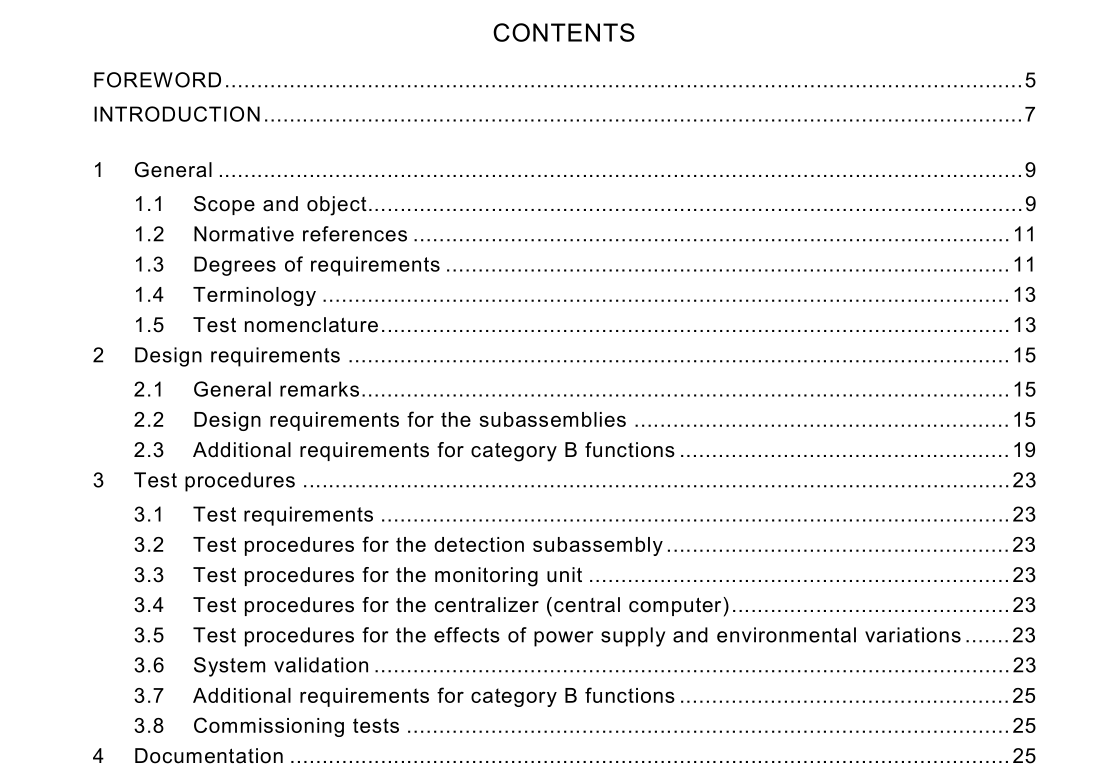IEC 61559-2 pdf download

IEC 61559-2 pdf download.Radiation in nuclear facilities – Centralized systems for continuous monitoring of radiation and/or levels of radioactivity
1 General
1.1 Scope and object This part 2 of IEC 61559 supplements IEC 61559 to include discharge, environmental, accident, and post-accident monitoring functions that are not within the scope of IEC 61559. It applies to centralized systems having a direct role in the achievement or maintenance of radiation protection in facilities other than nuclear power plants. These systems perform functions such as: – radiation monitoring of plant discharges; – interlock of control functions to prevent or to mitigate accidental release of radioactive material; – radiation and environmental monitoring functions to support monitoring of and response to accidents; – provide information to process control or safety systems for use in control or interlock functions. In some facilities, these functions may have greater safety importance than the functions addressed in IEC 61559. This standard applies to the integration of radiation monitoring functions into a centralized system. It will not directly apply to the design and testing of detection and measurement assemblies. Requirements for these assemblies are contained in existing standards.This standard describes the integration of functions including equipment such as those described in IEC 60761-1, IEC 60761-2, IEC 60761-3, IEC 60761-4, and IEC 60761-5 into a plant-wide digital system. The requirements of system-level components (central computer, subsystem computers, operator consoles and interconnections) are discussed. For detection assemblies, processing units and alarm units, this standard contains only the requirements needed to allow connection into the centralized system. The standards referenced above contain the specific requirements for these components. The standard identifies requirements pertinent to the integration of the above functions into a centralized system. Requirements for general and design characteristics, electrical performance requirements and tests, mechanical performance requirements and tests, software performance requirements and tests, environmental characteristic performance requirements and tests, and documentation are considered.
1.2 Normative references
The following referenced documents are indispensable for the application of this document. For dated references, only the edition cited applies. For undated references, the latest edition of the referenced document (including any amendments) applies. IEC 60050-393:1996, International Electrotechnical Vocabulary (IEV) – Chapter 393: Nuclear instrumentation: Physical phenomena and basic concepts IEC 60050-394:1995, International Electrotechnical Vocabulary (IEV) – Chapter 394: Nuclear instrumentation: Instruments IEC 60181:1964, Index of electrical measuring apparatus used in connection with ionizing radiation IEC 60181A:1965, First supplement IEC 60761-1:2002, Equipment for continuous monitoring of radioactivity in gaseous effluents – Part 1: General requirements IEC 60761-2:2002, Equipment for continuous monitoring of radioactivity in gaseous effluents – Part 2: Specific requirements for radioactive aerosol monitors including transuranic aerosols IEC 60761-3:2002, Equipment for continuous monitoring of radioactivity in gaseous effluents – Part 3: Specific requirements for radioactive noble gas monitors IEC 60761-4:2002, Equipment for continuous monitoring of radioactivity in gaseous effluents – Part 4: Specific requirements for radioactive iodine monitors IEC 60761-5:2002, Equipment for continuous monitoring of radioactivity in gaseous effluents – Part 5: Specific requirements for tritium monitors IEC 60964:1989, Design for control rooms of nuclear power plants IEC 61226:1993, Nuclear power plants – Instrumentation and control systems important for safety – Classification IEC 61497:1998, Nuclear power plants – Electrical interlocks for functions important to safety – Recommendations for design and implementation IEC 61559:1996, Radiation in nuclear facilities – Centralized system for continuous monitoring of radiation and/or levels of radioactivity
1.4 Terminology
The general terminology concerning detection and measurement of ionizing radiation and nuclear instrumentation is given in IEC 60050-393, IEC 60050-394, IEC 60181 and IEC 60181A. Specific terminology for centralized systems for continuous monitoring of radiation is given in IEC 61559. For the purpose of this part of IEC 61559, the following definitions apply. 1.4.1 category B classification this classification is derived from IEC 61226. Category B is used to denote function and associated systems and equipment (FSE) which play a complementary role in the achievement or maintenance of nuclear safety. Category B includes FSEs whose failure could initiate an event that could lead to an anticipated operational occurrence (AOO) or accident. Category B also includes FSEs whose failure could worsen the severity of an AOO or accident. More specifically, category B FSEs are defined as relevant to: • maintaining process variables within the limits assumed in the safety analysis; • preventing or mitigating minor radiation releases; and • considerably reducing the frequency of an initiating event as claimed in the safety analysis. 1.4.2 operator console (OC) it displays system or subsystem data to plant operators and is the operator control interface through which operators request information, input information, and perform control functions. Operator consoles typically incorporate a video display unit (VDU) as indicated in IEC 61559. NOTE This part of IEC 61559 uses the more general term “ operator console ” to make clear the intent that other types of user interfaces are allowed. A centralized radiation monitoring system (RMS) will have at least one OC. RMS OC functions may be incorporated into the OC functions of a more general purpose display.









